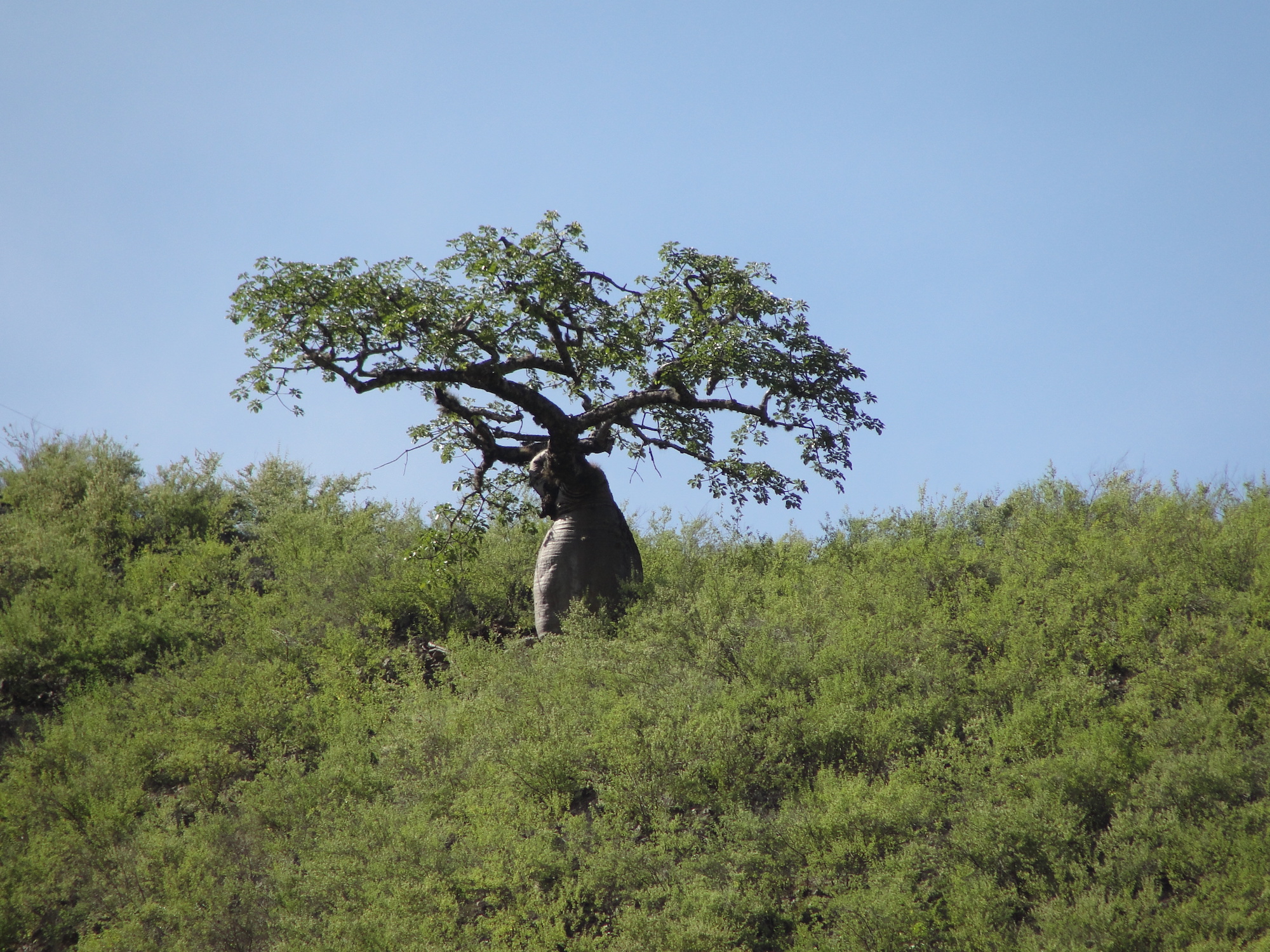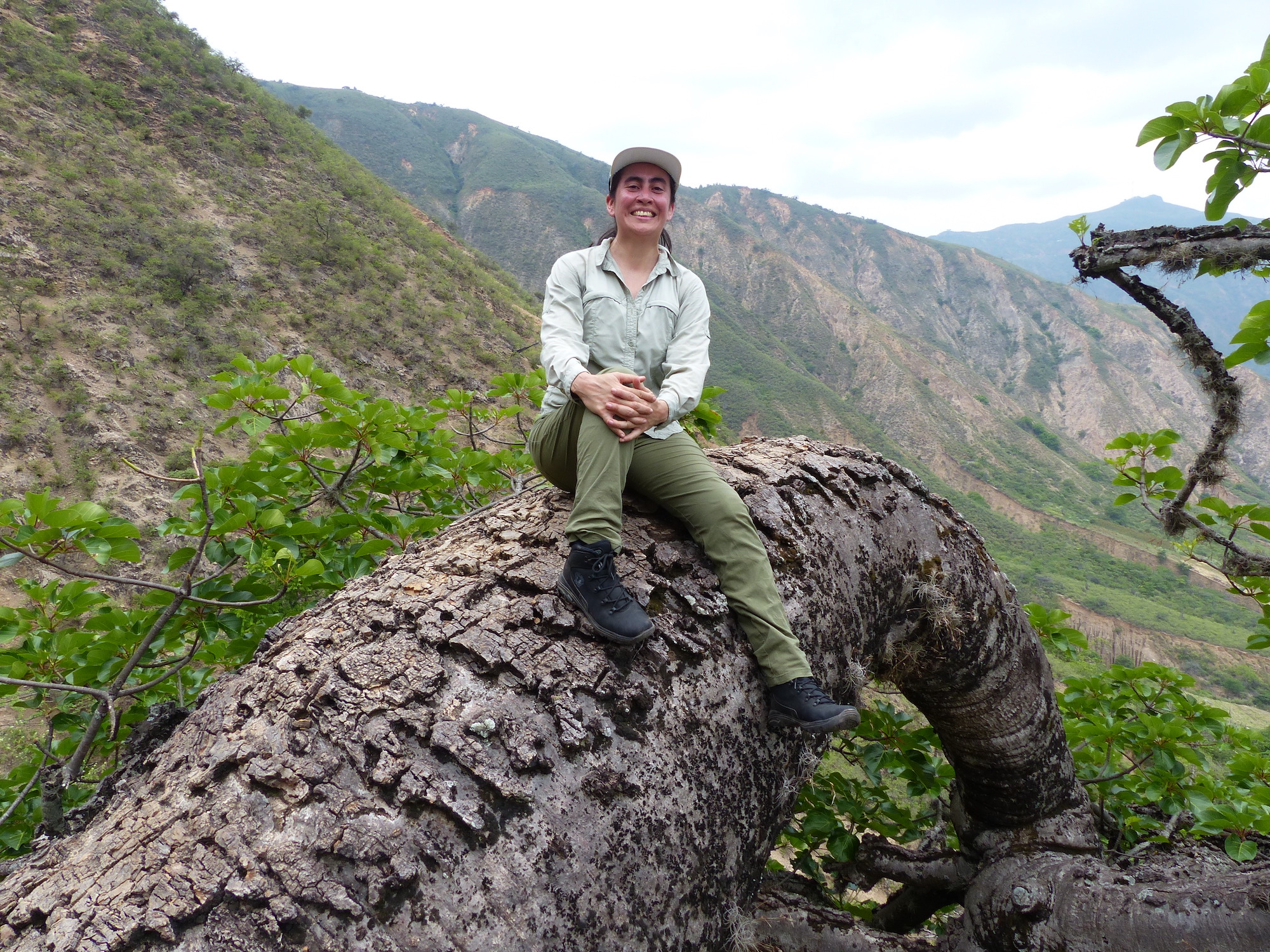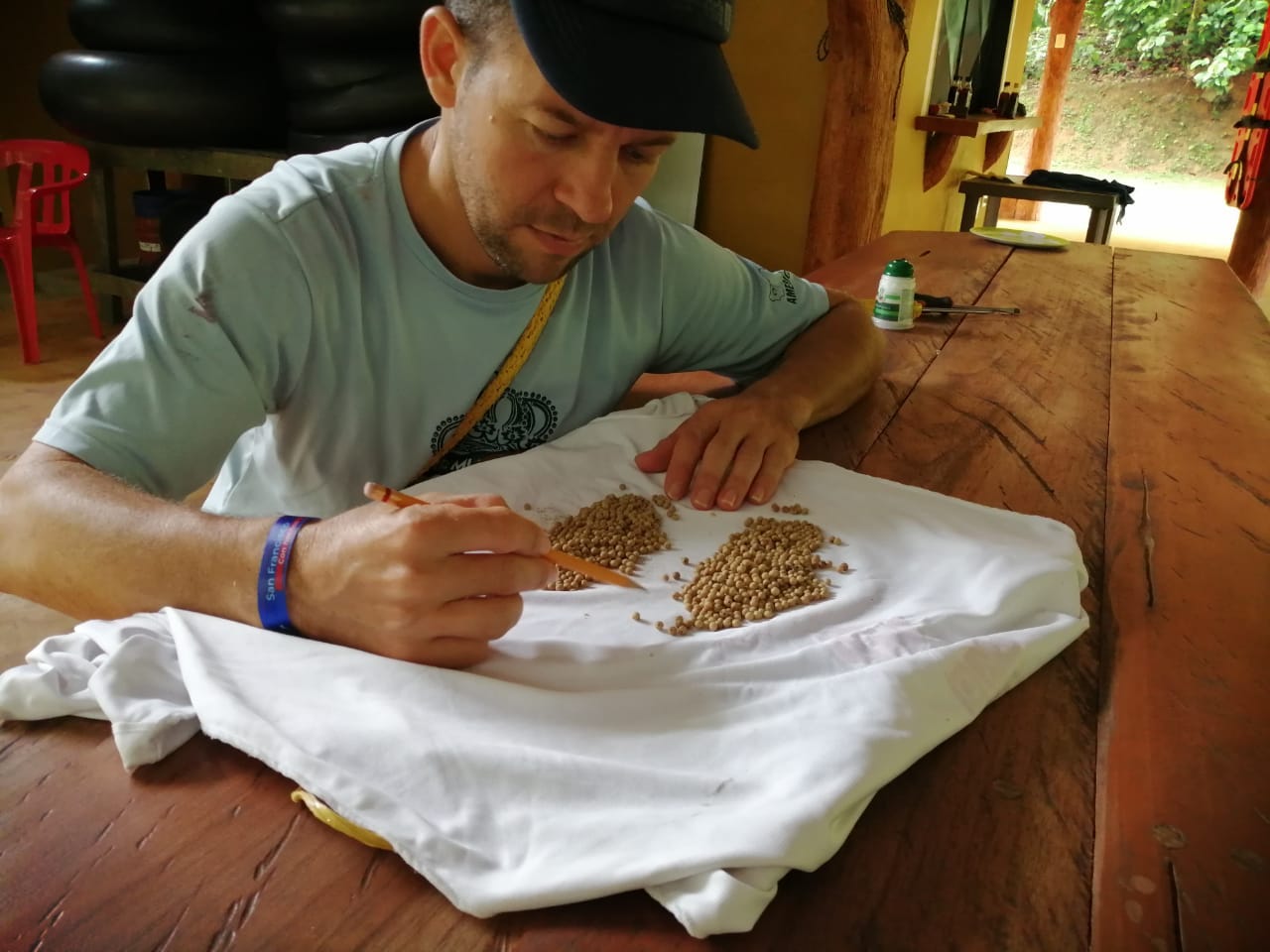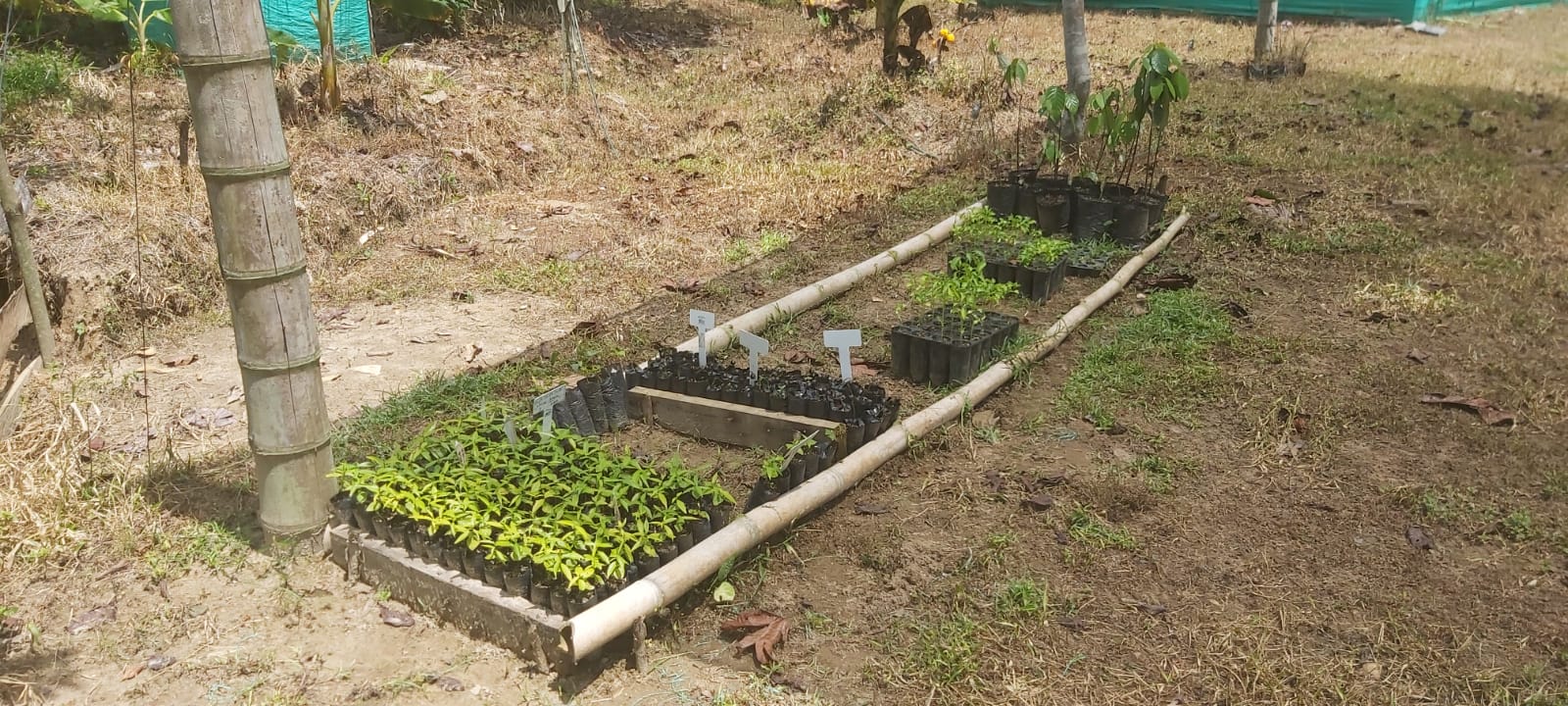Over 1,100 Tree Species Are Only In Colombia. Nearly Half Are Threatened.
Scientists painstakingly documented the status of 860 tree species. Now, they’re working with local communities to repopulate those at risk.

The ceiba barrigona (big-bellied ceiba) occurs only in the Chicamocha Canyon in Colombia. It is one of hundreds tree species endemic to the country that are at risk of extinction. Photo courtesy of Cristina Lopez-Gallego
Este artículo está disponible en español. This article is available in Spanish.
Seeds of the ceiba barrigona, or big-bellied ceiba tree, are not easy to find. The rare giant, known scientifically as Cavanillesia chicamochae, grows in a single canyon in the eastern branch of the Colombian Andes. “You have to walk for days and days just to find an individual that might have a few seeds,” says Dr. Cristina Lopez-Gallego, a biologist at the Universidad de Antioquia who works in plant conservation. But however difficult, collecting seeds may be critical to the future of that species—and many others.
The ceiba barrigona is one of over 1,100 tree species endemic to Colombia, which is known for its extraordinary plant biodiversity. But, after assessing hundreds of endemic tree species for a study published earlier this year, Lopez-Gallego and her colleagues estimate that nearly half the endemic trees in the South American country are in trouble.
The objective of the study was to produce information about species that could inform conservation decisions, Lopez-Gallego says. The team used the methodology of the International Union for Conservation of Nature (IUCN) Red List, a global inventory of plant and animal species that categorizes them by their risk of extinction. Assessing tree species for the Red List involved measuring their geographic distribution, analyzing habitat quantity and quality, and documenting human-caused threats.
The researchers assessed 860 endemic tree species and found that 357 are threatened. Of those, 95 were designated critically endangered, 148 endangered, and 114 vulnerable. Of the species found not to be at risk, 64 were categorized as near threatened, and 416 were placed in the least concern category. (About two dozen didn’t have enough data for a full assessment.)

Lopez-Gallego says their research shows the dire status of endemic tree species. “It’s shocking. It’s a really tough thing,” she says of the findings.
“The disappearance of one species is very concerning. That so many endangered species are at high risk is extremely worrisome,” says Dr. Mauricio Diazgranados, the chief science officer and dean of the International Plant Science Center at the New York Botanical Garden, who was not involved in the study.
Diazgranados is an expert in frailejones, a group of perennial plants with hairy leaves found in high-altitude ecosystems in the Andes. He says he is not surprised by the percentage of endemic trees that are at risk. In his own research, he has found that 60% of frailejón species are threatened. Diazgranados believes the degree to which trees are threatened might be even higher than the Red List suggests because its methodology does not account for the effects of climate change.
According to the authors of the study, the most significant threats to Colombia’s trees are deforestation, ecosystem fragmentation, and habitat destruction. The primary drivers of deforestation include cattle ranching, agriculture, mining, and cocaine production. This issue often intersects with the economy of local communities, as many have to cut down trees to survive. “Conservation cannot be detached from solving social problems,” Diazgranados says.

One Colombian organization using Red List data to guide its work is the nonprofit Humboldt Institute, which collects and propagates seeds from threatened species as part of its conservation efforts. However, collecting and growing seeds of endangered endemic trees is easier said than done, says Dr. Carolina Castellanos, manager of collections at the institute. “You might collect 100 seeds, and only ten might be viable,” she says. And adverse weather—like heavy rain during La Niña—can decrease production of fruit, and hence seeds, even in well-tended species like commercial crops. The effects can be dire in rare wild species. Making things even more difficult is the fact that many tropical seeds are recalcitrant, which means they don’t survive drying and freezing and can’t be stored long-term.
To overcome these challenges, the Humboldt Institute teams up with researchers to support community nurseries in remote regions across the country where local leaders and volunteers help grow the endangered trees. It’s much easier—and cheaper—to grow trees in the regions where the plants have been found with local support. There are currently eight nurseries growing species of endangered trees selected based on the research of Lopez-Gallego and her colleagues. The goal is to replant the young trees in a few years in protected areas identified by scientists and managed by the institute.

“In Colombia, we use more than 7,000 species [of plants] for different things, from crafts to food to ornamental use,” says Castellanos, who argues that plants are essential to our cities, environments, and culture, even if we are unaware of them. She adds that to protect endangered trees, it is important for Colombians to learn about the country’s plant diversity. Diazgranados also laments the lack of such education in schools. Even as a top expert on Colombian plants, he says he didn’t learn about the country’s biodiversity until he was in college.
When a tree goes extinct, Diazgranados says, its evolution, chemistry, potential uses, and social history also disappear. Lopez-Gallego knows they can’t save all of Colombia’s endangered trees and that many might disappear during her lifetime. But she points out that efforts to protect those trees also benefit other species, ecosystems, and local communities. “This work is difficult, and sometimes frustrating,” she says. “But it is also very rewarding.”
All interviews for this article were conducted in Spanish and translated by the author.
Santiago Flórez is Science Friday’s community manager. He is a former teacher, anthropologist and journalist.